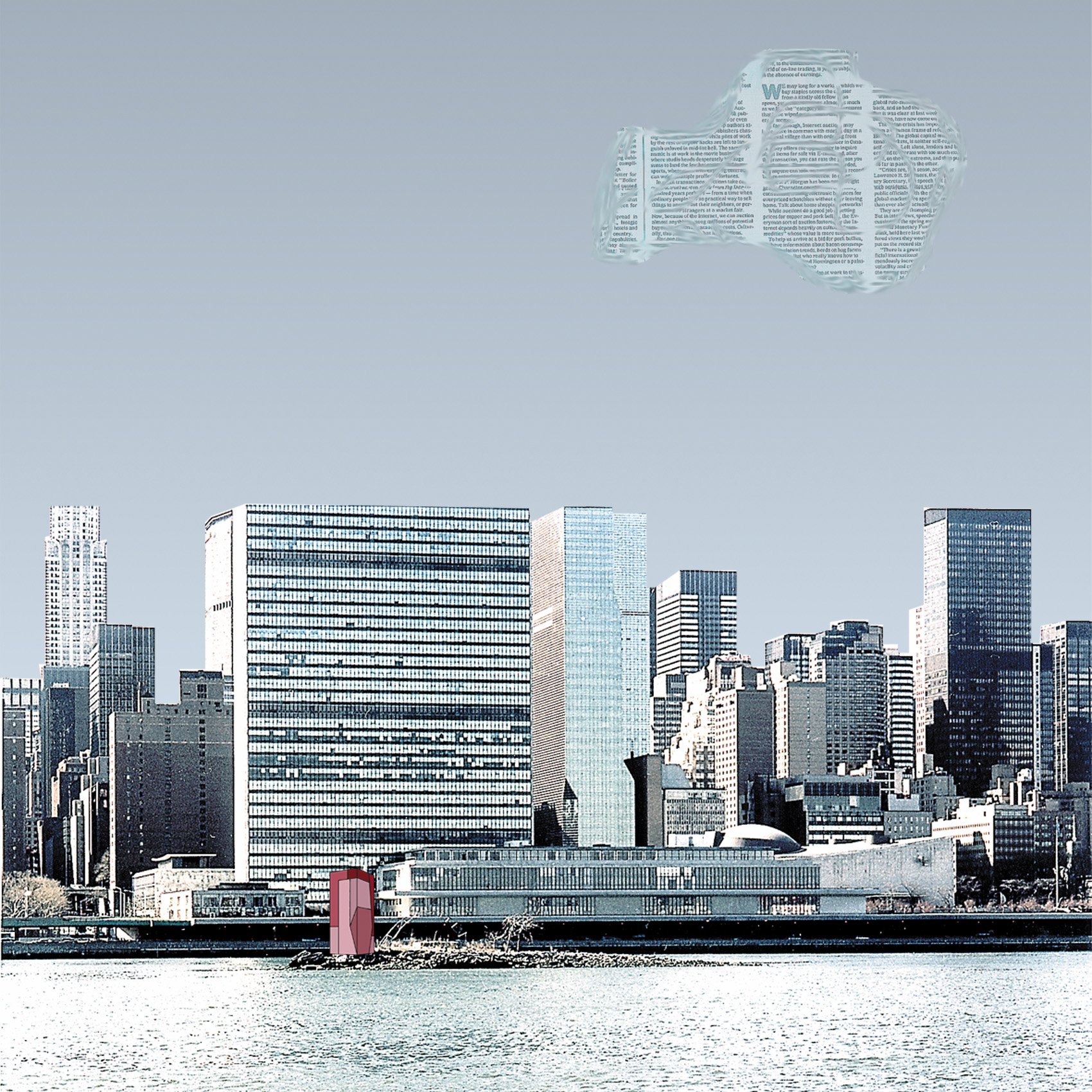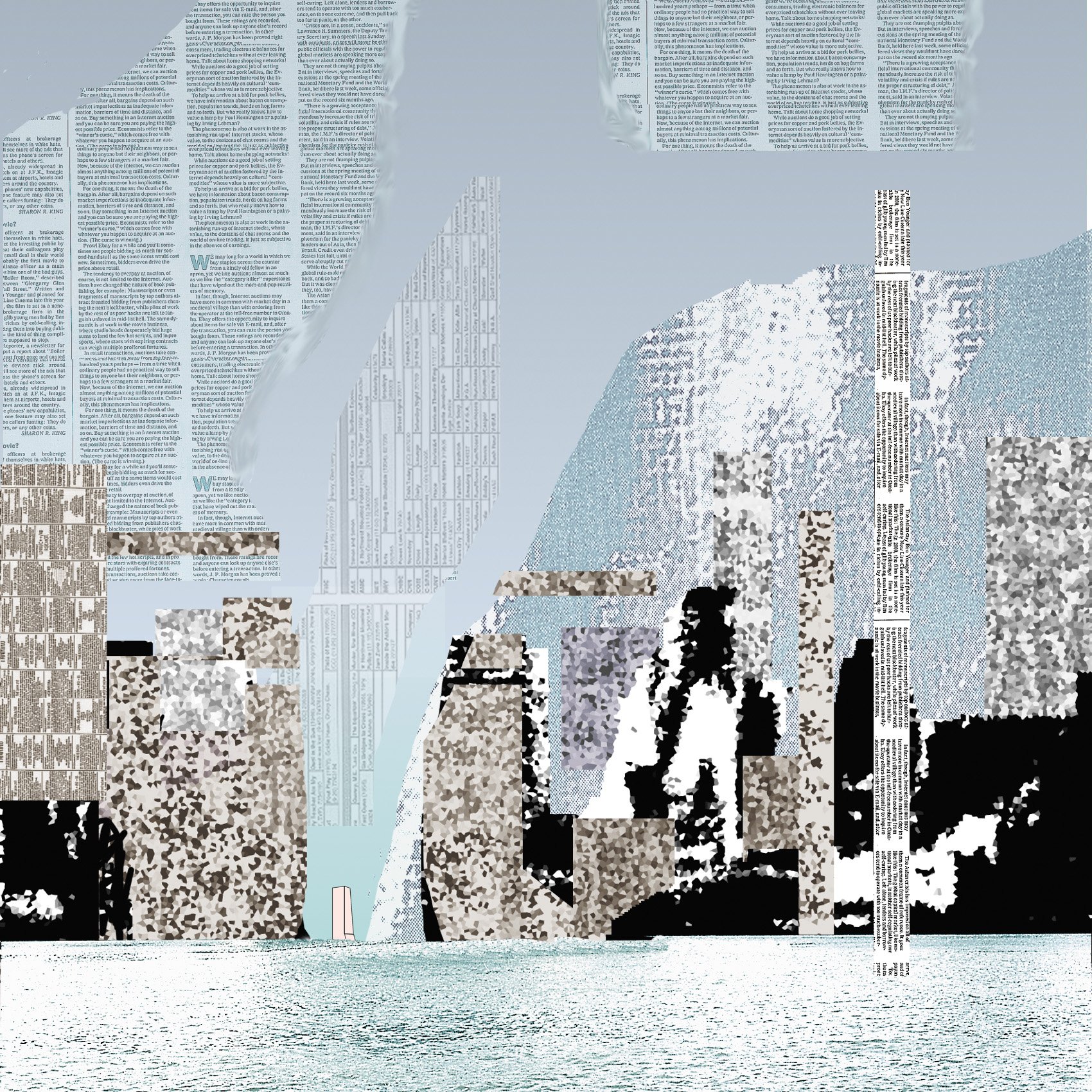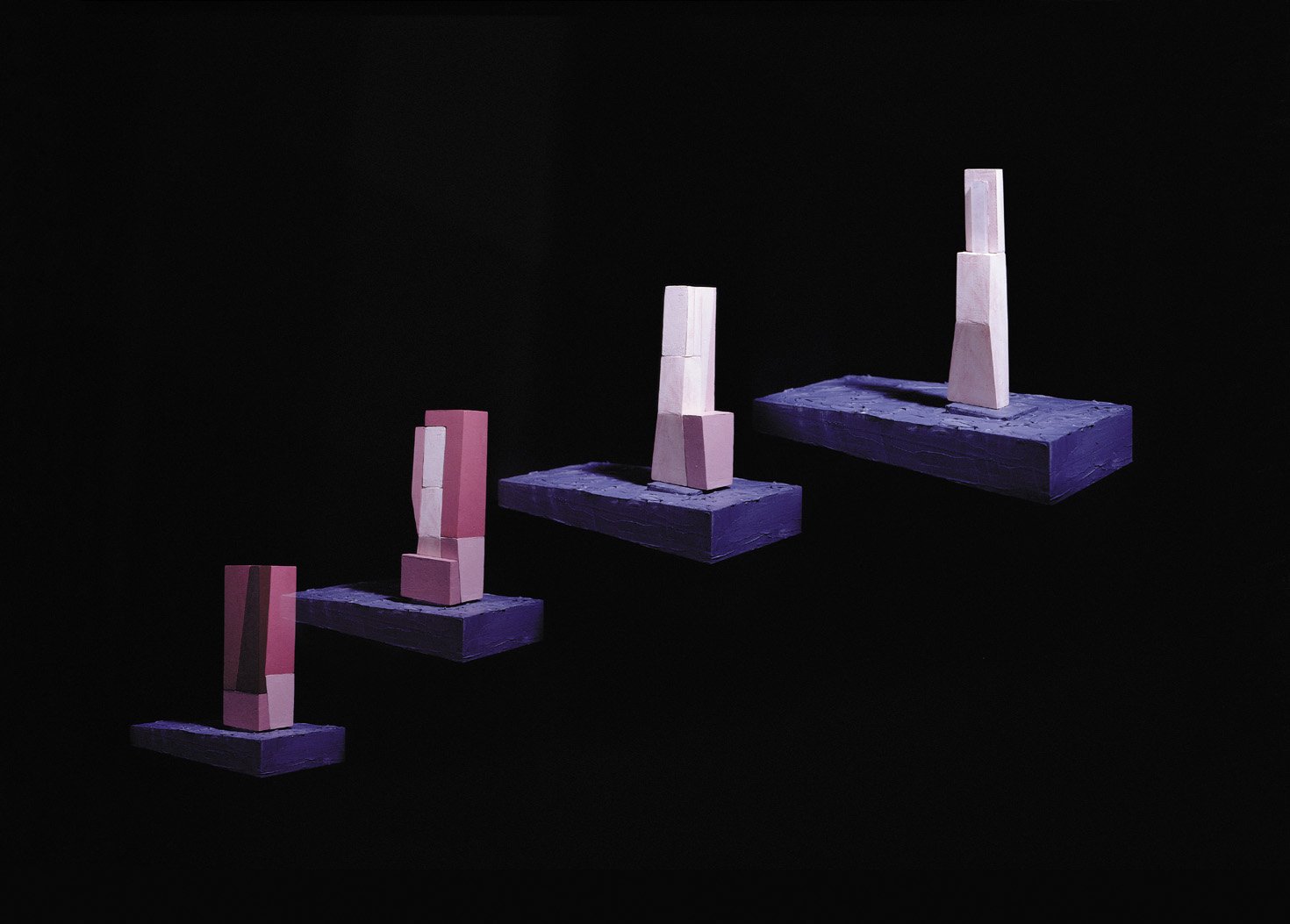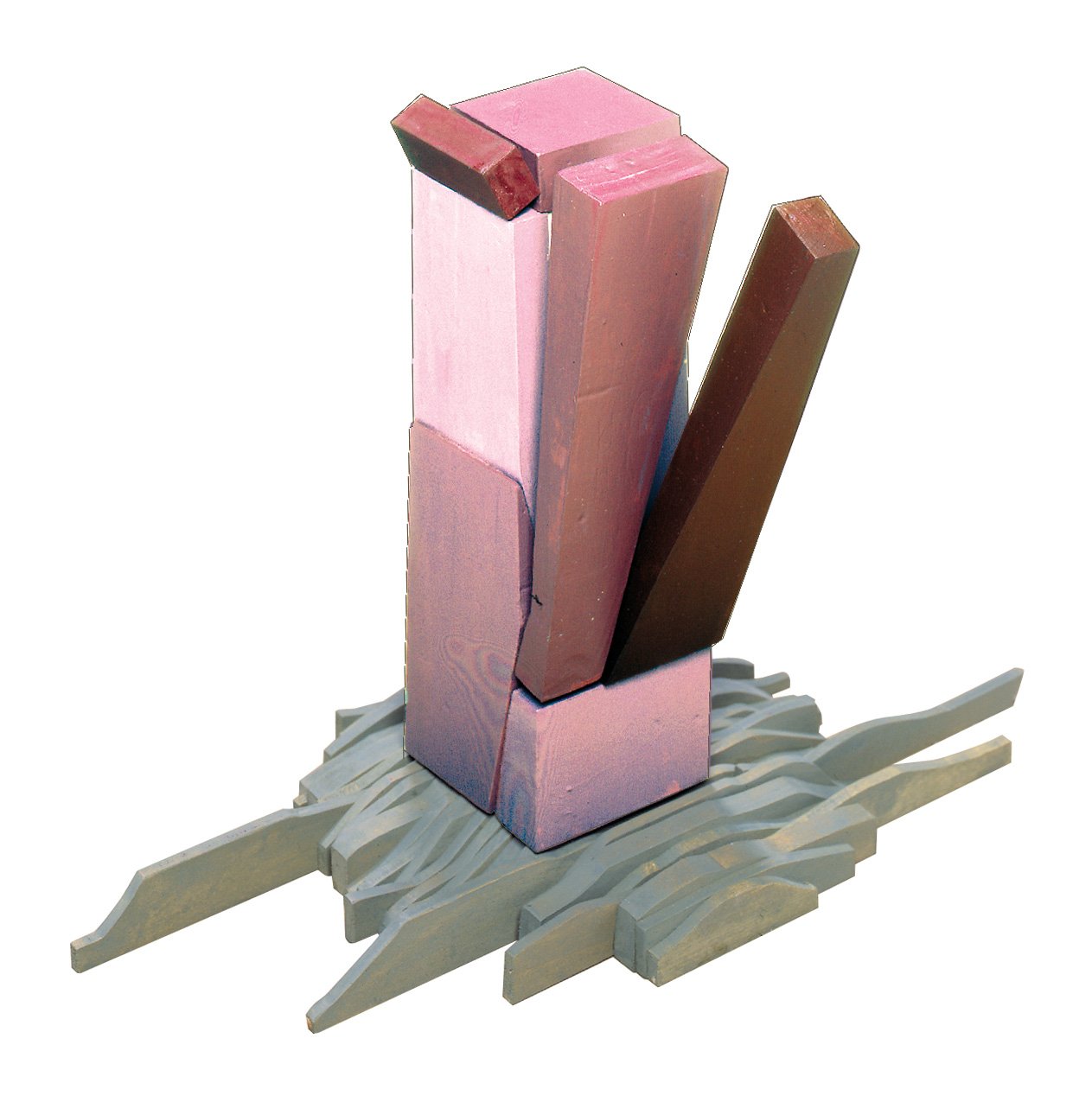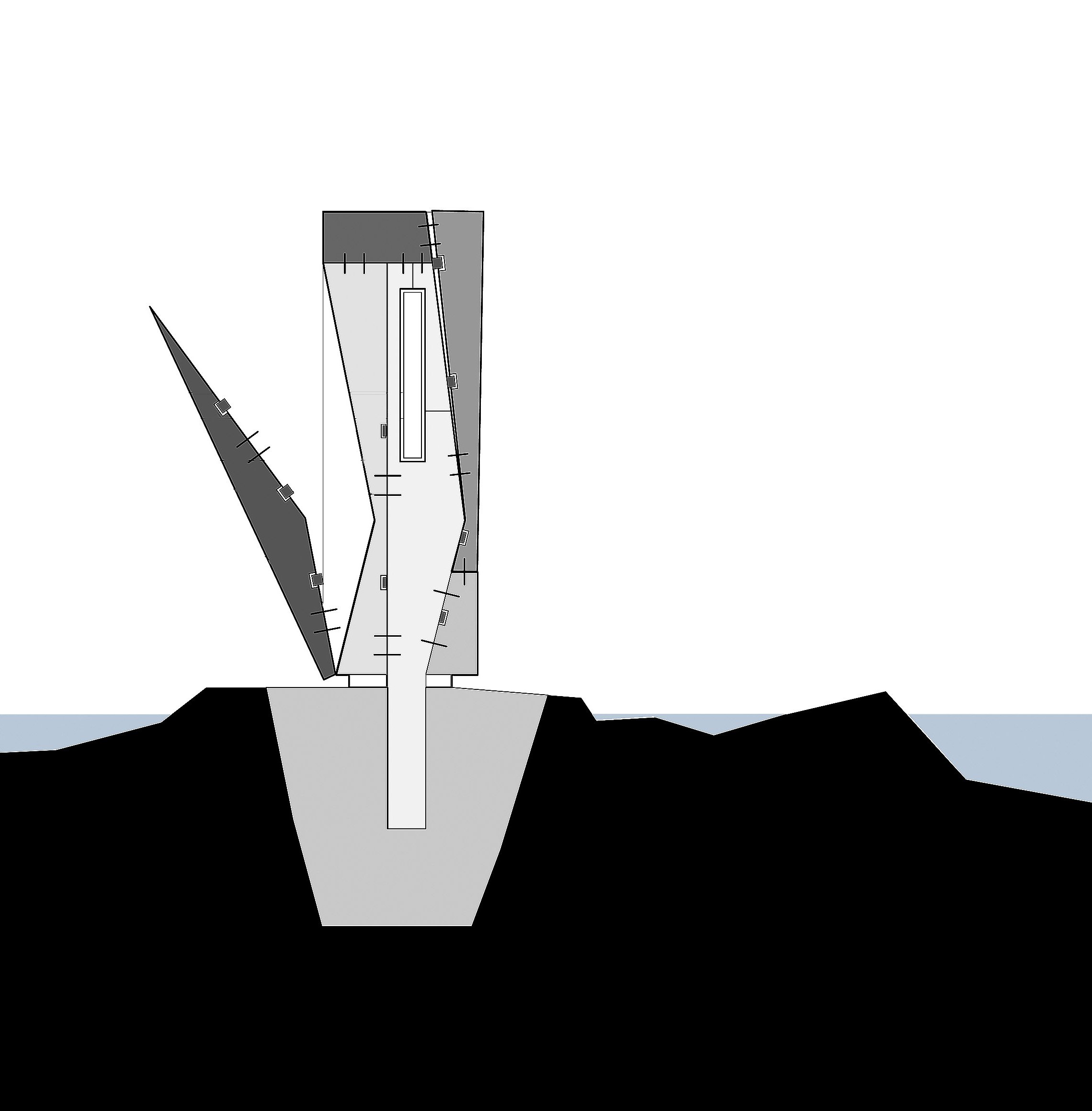New york times Capsule Competition
Location: New York, NY
Date: 1999
When the Times invited ideas to enclose their capsule—to be opened in the Year 3000—we were humbled at the idea of piquing public interest for a thousand years. Our response was to create a monument that would slowly disassemble itself on a slightly unpredictable schedule, precision of movement plus or minus 30 years. Each century’s slab peels itself off (through using the salt water of the East River as a giant battery source) inviting excitement and wonder at the simple spirit of the New Yorkers of long ago Year 2000.
By changing itself the monument is composed of 11 granite slabs, 10 of which peel off at approximately one century intervals. The monument is a deep time clock. The granite slabs are red because that color is most visible against the river and the cityscape. The slabs are graduated in color; the darkest slab pushes off first, the lightest slab is the core. The core slab, which contains the hermetically sealed glass container of artifacts, is anchored 3 meters deep into the bedrock of the island. The other slabs are designed to progressively push themselves off like leaves of an artichoke. Sometimes, the slabs push completely off, as their connections give way. Sometimes, they push off at a tilt, precariously tilting outward for as much as a few decades, until they, too, crash onto the rock, becoming part of the island. Until finally, only the core slab remains in the year 3000, beckoning Year 3000 New Yorkers to open the puzzle box their ancestors sent.
The structure of pins and levering corrosive plates, connected by wires, and powered by slow-leeching tidal salt water from the East River, acts as a giant battery. The electrolysis action of the battery corrodes the levers, which, in turn, push the stone slabs off the monument, giving it an ever-changing form.

